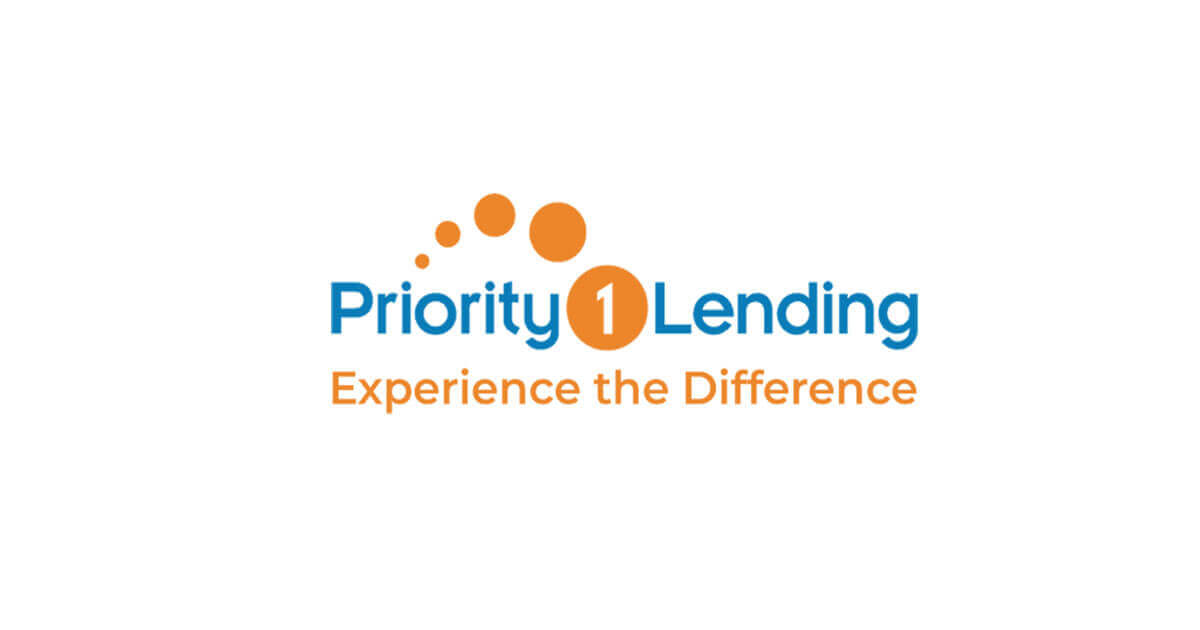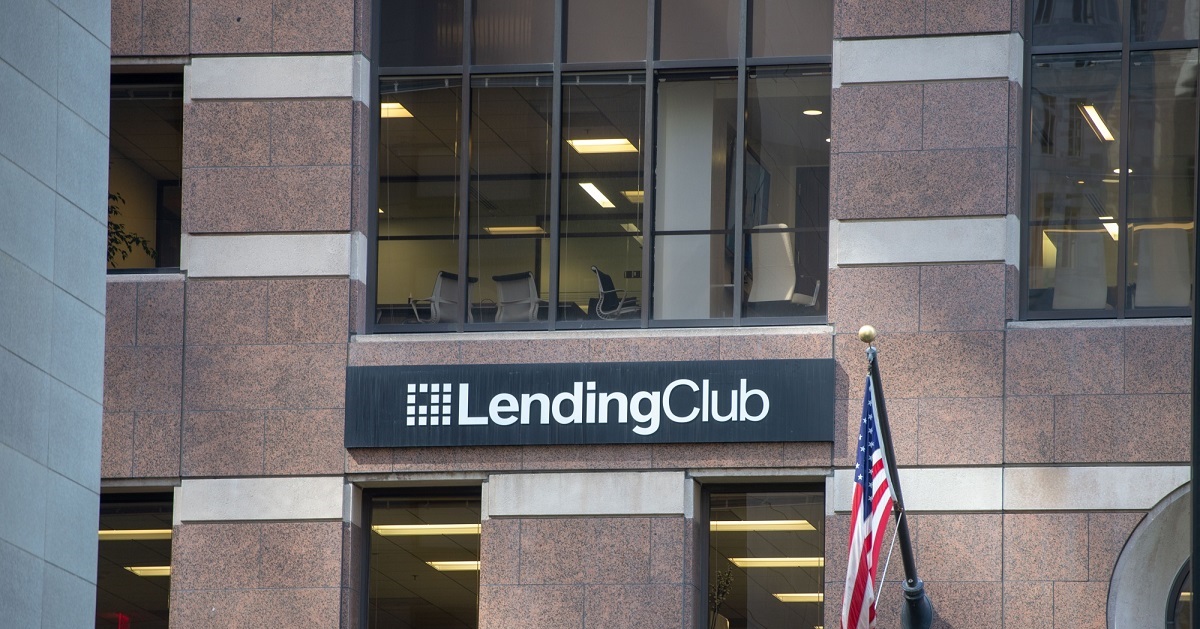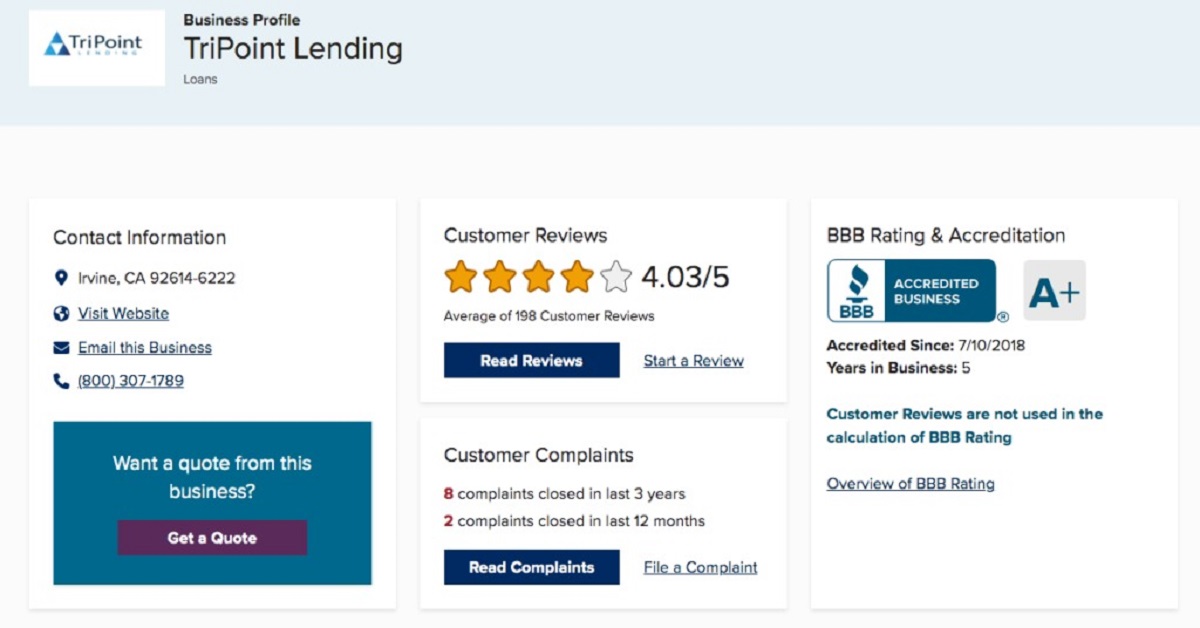Introduction
Welcome to the world of priority lending, where borrowers are given special privileges and benefits to meet their financial needs. In today’s dynamic economic landscape, obtaining loans has become a crucial part of achieving personal and professional goals. However, not all borrowers have the same financial standing, and as a result, traditional lending practices might not cater to the unique requirements of every individual or business.
Priority lending, also known as preferred lending or special lending, is a specialized form of financing that aims to provide tailored solutions to borrowers who are considered a priority by financial institutions. These borrowers may include individuals from marginalized communities, small business owners, first-time homebuyers, or those seeking funding for essential projects or initiatives.
Priority lending recognizes the importance of inclusive finance, where access to credit and capital is made available to those who may not meet the stringent requirements of traditional loan products. It is a way for banks and lending institutions to promote social and economic development by addressing the financial needs of underserved and underrepresented communities.
Unlike conventional lending practices, priority lending takes into account additional factors beyond creditworthiness and collateral. It considers the social impact, long-term sustainability, and potential benefits of the loan not only for the borrower but also for the community at large. This approach helps bridge the gap and creates opportunities for individuals and businesses that might have otherwise struggled to secure financing.
Whether it is funding for affordable housing, education, healthcare, or small-scale entrepreneurship, priority lending aims to ensure that everyone has an equal chance to access financial resources to pursue their dreams and aspirations. By providing specialized loan programs and favorable terms, priority lending promotes financial inclusion and empowerment, fostering a more equitable society.
In the following sections, we will delve deeper into the definition, importance, features, benefits, eligibility criteria, as well as the challenges and risks associated with priority lending. Understanding these aspects will provide a comprehensive overview of this unique borrowing ecosystem and help borrowers make informed decisions when seeking financial assistance.
Definition of Priority Lending
Priority lending refers to a specialized form of financing where borrowers who are considered a priority by financial institutions are provided with preferential treatment and customized loan solutions. This lending practice aims to address the specific needs of individuals and businesses who may not meet the standard requirements of traditional loan products.
While traditional lending focuses primarily on factors such as creditworthiness and collateral, priority lending takes a more holistic approach. It considers additional factors such as social impact, sustainability, and community development when evaluating loan applications. This ensures that borrowers from marginalized communities or those involved in projects with a positive social or environmental impact have equal access to financial resources.
Financial institutions offering priority lending programs typically have a set of guidelines and criteria to identify eligible borrowers. These criteria may include factors such as income level, employment status, credit history, and community involvement. By evaluating the borrower’s circumstances from a broader perspective, lenders can determine their priority status and tailor loan terms accordingly.
Priority lending covers a wide range of financial products, including personal loans, mortgages, business loans, and microfinance. The terms and conditions of these loans are specifically designed to meet the financial needs and constraints of priority borrowers. This may include lower interest rates, extended repayment periods, reduced fees, or flexible repayment options.
In addition to providing financial support, priority lending also focuses on empowering borrowers through financial education and counseling. Lenders often offer resources and guidance to help borrowers make informed decisions, improve their financial literacy, and build a strong credit history. This holistic approach aims to create a long-term positive impact on the financial well-being of individuals and communities.
Overall, the definition of priority lending revolves around providing equal opportunities and access to financial resources for individuals and businesses that may face barriers in traditional lending channels. By considering a broader set of criteria and offering customized loan solutions, priority lending promotes inclusivity, social development, and economic growth.
Importance of Priority Lending
Priority lending plays a crucial role in fostering economic and social development by ensuring that individuals and businesses with unique financial needs have access to the necessary funding. Here are some key reasons why priority lending is important:
1. Financial Inclusion: Priority lending promotes financial inclusion by extending credit to individuals and communities that may have limited access to traditional financing. It helps bridge the gap between the underserved population and mainstream financial institutions, empowering them to participate in economic activities and improve their standard of living.
2. Equal Opportunities: By offering specialized loan programs and favorable terms, priority lending creates equal opportunities for individuals and businesses that may not meet the strict requirements of traditional loans. It levels the playing field and ensures that everyone has a fair chance to obtain financing and achieve their personal or entrepreneurial goals.
3. Community Development: Priority lending supports community development initiatives by providing funding to projects that have a positive social or environmental impact. It enables borrowers to invest in affordable housing, education, healthcare, renewable energy, or other initiatives that enhance the well-being of the community and contribute to sustainable development.
4. Small Business Growth: Small businesses are often the backbone of the economy, yet they can face challenges in accessing capital. Priority lending programs specifically cater to the financing needs of small businesses, promoting entrepreneurship, job creation, and economic growth at the grassroots level.
5. Social Impact: Priority lending goes beyond financial considerations and embraces the idea of social impact. It supports borrowers who are engaged in projects or businesses with a positive social or environmental mission. By providing them with necessary funding and favorable terms, priority lending encourages the growth of socially responsible enterprises that contribute to a better society.
6. Financial Education and Empowerment: Priority lending institutions often provide financial education and counseling to borrowers. Through these initiatives, borrowers gain knowledge and skills to manage their finances effectively, build a strong credit history, and make informed financial decisions. This empowerment contributes to the long-term financial well-being of individuals and communities.
In summary, the importance of priority lending lies in its ability to promote financial inclusion, equal opportunities, community development, small business growth, social impact, and financial education. By addressing the unique needs of underserved borrowers, priority lending plays a vital role in creating a more inclusive and sustainable financial system.
Features of Priority Lending
Priority lending comes with a set of distinctive features that distinguish it from traditional lending practices. These features are designed to cater to the specific needs of priority borrowers and promote financial inclusion. Here are some key features of priority lending:
1. Tailored Loan Programs: Priority lending offers specialized loan programs that are designed to meet the unique requirements of different borrower groups. These programs may include personal loans, mortgages, business loans, or microfinance options, each with specific terms and conditions to suit the priority borrower’s financial goals and circumstances.
2. Favorable Terms: Priority lending often provides more favorable terms compared to traditional loans. These terms may include lower interest rates, extended repayment periods, reduced fees, or flexible repayment options. The aim is to alleviate financial burdens and make borrowing more affordable and manageable for priority borrowers.
3. Holistic Assessment: Instead of relying solely on credit scores and collateral, priority lending takes a holistic approach when assessing loan applications. Lenders consider factors such as income level, employment status, community involvement, and social impact of the borrowing project. This broader assessment allows lenders to evaluate the borrower’s overall financial situation and potential for success beyond traditional markers.
4. Financial Counseling and Education: Priority lending institutions often provide financial counseling and educational resources to borrowers. This includes guidance on budgeting, financial planning, debt management, and building creditworthiness. By empowering borrowers with knowledge and skills, priority lending promotes long-term financial stability and success.
5. Social Impact Considerations: Priority lending takes into account the social impact of the borrowing project. Lenders consider whether the project aligns with sustainable development goals, supports underserved communities, or addresses pressing societal issues. Projects that have a positive social or environmental impact are more likely to receive preference in the priority lending process.
6. Community Development Initiatives: Many priority lending programs are focused on community development. Lenders may partner with local organizations, government agencies, or nonprofits to fund projects that enhance the quality of life in underserved areas. These initiatives can include affordable housing, healthcare facilities, education programs, or infrastructure improvements.
7. Eligibility Criteria: Priority lending programs have specific eligibility criteria that determine who qualifies for priority status. These criteria can vary depending on the lender and the targeted borrower group. They may include income thresholds, residency requirements, employment status, or involvement in socially impactful projects.
In summary, the features of priority lending encompass tailored loan programs, favorable terms, holistic assessment, financial counseling, social impact considerations, community development initiatives, and specific eligibility criteria. By incorporating these features, priority lending aims to provide specialized support and promote inclusive and sustainable financial practices.
Benefits of Priority Lending
Priority lending offers a range of benefits to both borrowers and society as a whole. By providing tailored loan programs and favorable terms, priority lending promotes financial inclusion, community development, and economic growth. Here are some key benefits of priority lending:
1. Increased Access to Financing: Priority lending expands access to financial resources for individuals and businesses that may face barriers in traditional lending channels. It enables borrowers with diverse financial backgrounds, limited credit history, or unique circumstances to secure the funding they need to pursue their goals and aspirations.
2. Customized Loan Solutions: Priority lending provides borrowers with customized loan programs that are specifically designed to meet their unique needs. This includes flexible repayment options, lower interest rates, extended loan terms, and reduced fees. These tailored solutions make borrowing more affordable and manageable, enabling borrowers to achieve their financial objectives.
3. Financial Empowerment: Priority lending institutions often offer financial counseling and education programs to borrowers. These resources help borrowers develop essential financial skills, such as budgeting, debt management, and credit building. By empowering borrowers with knowledge and confidence, priority lending promotes long-term financial stability and success.
4. Inclusive Economic Growth: Priority lending plays a crucial role in promoting inclusive economic growth. By providing funding to small businesses, entrepreneurs, and individuals from underserved communities, priority lending stimulates entrepreneurship, job creation, and socioeconomic development at the grassroots level. This contributes to a more balanced and equitable economy.
5. Social and Environmental Impact: Priority lending supports borrowers who are engaged in projects or businesses with a positive social or environmental impact. By offering specialized loan programs and favorable terms to these borrowers, priority lending encourages the growth of socially responsible enterprises. This promotes sustainable development and helps address pressing societal and environmental challenges.
6. Community Development: Priority lending focuses on community development initiatives by providing funding for projects that enhance the well-being of underserved areas. This can include affordable housing, healthcare facilities, education programs, infrastructure improvements, and other initiatives that contribute to the overall quality of life in the community.
7. Equal Opportunities: Priority lending ensures that individuals and businesses facing disadvantages have equal access to financial resources. It levels the playing field and helps overcome systemic barriers, enabling borrowers from marginalized groups to overcome financial obstacles and achieve their goals. This promotes social inclusion and equal opportunities for all.
In summary, the benefits of priority lending include increased access to financing, customized loan solutions, financial empowerment, inclusive economic growth, social and environmental impact, community development, and equal opportunities. By offering these benefits, priority lending contributes to a more inclusive and sustainable financial system.
Types of Priority Lending Programs
Priority lending encompasses various programs that cater to the specific needs of different borrower groups. These programs are designed to provide targeted support and ensure financial inclusion. Here are some common types of priority lending programs:
1. Affordable Housing Loans: These programs focus on providing financing for affordable housing initiatives. They offer favorable terms, such as lower interest rates and extended repayment periods, to make homeownership more accessible for low-income individuals and families. Affordable housing loans aim to address the housing needs of underserved communities and promote stable and sustainable housing options.
2. Small Business Loans: Priority lending programs for small businesses aim to support entrepreneurship and economic growth at the grassroots level. These loans provide capital to start-up ventures, microenterprises, and small businesses that may face challenges in accessing traditional funding. The programs often offer flexible terms, reduced collateral requirements, and tailored repayment options to meet the unique needs of small businesses.
3. Microfinance: Microfinance programs focus on providing financial services, including small loans, savings accounts, and insurance, to individuals who are excluded from the formal banking sector. These programs often target low-income individuals, particularly women, and offer customized loan solutions to help them start or expand small businesses, generate income, and improve their livelihoods.
4. Education Loans and Scholarships: Priority lending programs for education aim to make higher education more accessible for individuals from disadvantaged backgrounds. These programs provide loans with favorable terms, such as reduced interest rates or extended repayment periods, to finance tuition fees, books, and other educational expenses. Some priority lending initiatives also include scholarships that cover a portion or the entire cost of education.
5. Agricultural Loans: Agricultural lending programs support farmers, agricultural cooperatives, and agribusinesses by providing funding for agricultural projects and equipment. These programs often have specialized loan terms and flexibility to meet the unique needs and challenges of the agriculture sector. They can help increase agricultural productivity, promote sustainable farming practices, and improve rural livelihoods.
6. Green Finance: Green finance programs focus on providing funding for environmentally sustainable projects and initiatives. These programs support borrowers who are engaged in renewable energy, energy efficiency, waste management, or other environmentally friendly ventures. Green finance offers specialized loan products and favorable terms to encourage the adoption of sustainable practices and reduce carbon footprints.
7. Community Development Initiatives: Some priority lending programs focus on community development projects that address specific needs or challenges in underserved areas. These initiatives can include funding for community centers, healthcare facilities, infrastructure projects, or other endeavors that contribute to the well-being and development of the community as a whole.
It’s important to note that the types of priority lending programs may vary depending on the region, financial institution, and targeted borrower group. Each program is designed to provide tailored support and opportunities for specific borrower segments, promoting financial inclusion and social development.
Eligibility Criteria for Priority Lending
Priority lending programs have specific eligibility criteria to determine which individuals or businesses qualify for priority status and can benefit from the specialized loan offerings. While the exact criteria may vary depending on the lending institution and the targeted borrower group, here are some common factors that are often considered:
1. Income Level: Many priority lending programs take into account the income level of the borrower. They may have income thresholds that determine whether an individual or household qualifies for priority lending. This criterion ensures that individuals with limited financial resources have access to the necessary funding.
2. Employment Status: Some priority lending programs consider the employment status of the borrower. This can include factors such as stable employment, self-employment, or participation in a specific industry or profession. The aim is to support individuals or businesses that may face challenges in obtaining financing due to unconventional employment situations.
3. Credit History: While priority lending looks beyond traditional credit scores, having a positive credit history can still be advantageous. Lenders may consider the borrower’s creditworthiness, repayment track record, and the ability to manage debt responsibly. However, limited or damaged credit history may not necessarily disqualify a borrower from priority lending programs.
4. Community Involvement: Some priority lending programs place emphasis on community involvement and engagement. Borrowers who actively contribute to the betterment of their communities through social initiatives, volunteer work, or nonprofit organizations may have a higher chance of qualifying for priority lending.
5. Social Impact: Certain priority lending programs focus on supporting projects or businesses with a positive social or environmental impact. Borrowers who can demonstrate that their endeavors align with sustainable development goals or contribute to the well-being of underserved communities may be prioritized in the lending process.
6. Targeted Borrower Group: Different priority lending programs may target specific borrower groups, such as women entrepreneurs, first-time homebuyers, veterans, or individuals from marginalized communities. These programs have eligibility criteria tailored to the needs and circumstances of the targeted group, ensuring that those who face specific barriers to traditional financing can access the necessary support.
7. Project Viability: For some priority lending programs, the viability of the borrowing project or business is an important criterion. Lenders may evaluate the potential for success, feasibility, and sustainability of the project before considering it for priority lending.
It is essential to note that the eligibility criteria for priority lending can vary significantly between different lending institutions and programs. It is advisable for potential borrowers to familiarize themselves with the specific criteria and requirements of the program they are interested in to determine their eligibility.
Challenges and Risks Associated with Priority Lending
While priority lending programs aim to provide tailored financial solutions and promote inclusivity, there are challenges and risks associated with this lending approach. It is essential to consider these factors to ensure the sustainability and effectiveness of priority lending initiatives. Here are some common challenges and risks:
1. Cost and Sustainability: Priority lending programs, particularly those offering favorable terms and lower interest rates, may have higher costs for the lending institutions. These costs can limit the scalability and long-term sustainability of such programs. Lenders must carefully manage their resources to ensure that the benefits of priority lending continue to outweigh the financial burden.
2. Default and Repayment Risks: Priority lending programs often involve borrowers with limited financial resources or unconventional credit histories. This can increase the risk of defaults and repayment difficulties. Lenders need to implement effective risk management strategies and ensure that borrowers are adequately informed about the terms and conditions of the loans to mitigate default risks.
3. Targeting the Right Borrower Groups: Identifying the appropriate borrower groups for priority lending can be challenging. It requires thorough research, data analysis, and a clear understanding of the specific needs and barriers faced by these groups. Lenders must take care not to exclude deserving individuals or businesses who may not fit traditional lending criteria but can benefit from priority lending support.
4. Balancing Social Impact and Financial Viability: Priority lending programs often prioritize projects and businesses with a positive social or environmental impact. While this is commendable, lenders must carefully balance the social impact goals with financial viability. Projects or businesses solely reliant on priority lending without a sustainable business model may pose risks to both the borrower and the lender.
5. Complexity and Additional Administrative Burden: Priority lending programs may require additional administrative procedures, documentation, and evaluation processes compared to traditional lending practices. This can increase the complexity and administrative burden for both the lender and the borrower, potentially causing delays or hindering the efficiency of the lending process.
6. Limited Awareness and Outreach: Some potential borrowers may be unaware of the existence or benefits of priority lending programs. Low awareness and limited outreach can hinder the reach and impact of these initiatives. Lenders must proactively engage with eligible borrowers, raise awareness, and provide clear information about the availability and advantages of priority lending.
7. External Economic Factors: Priority lending programs may be influenced by external economic factors such as fluctuations in interest rates, inflation, or economic downturns. These factors can impact the financial viability and sustainability of priority lending initiatives. Lenders need to consider these risks and adapt their lending practices accordingly to mitigate potential negative impacts.
By acknowledging and addressing these challenges and risks, lenders can improve the effectiveness and impact of priority lending programs. It requires continuous monitoring, evaluation, and adaptation of lending practices to ensure that priority lending remains a sustainable and inclusive approach to financial support.
Conclusion
Priority lending plays a vital role in promoting financial inclusion, social development, and economic growth. By providing tailored loan programs and favorable terms, priority lending ensures that individuals and businesses with unique financial needs have access to the necessary funding. It goes beyond traditional lending practices by considering additional factors such as social impact, sustainability, and community development when evaluating loan applications. This approach creates equal opportunities for underserved communities, small businesses, and individuals who face barriers in accessing traditional financing channels.
The features of priority lending, including customized loan solutions, favorable terms, and holistic assessment, cater to the diverse needs of borrowers. Priority lending programs encompass affordable housing loans, small business loans, microfinance, education loans, agricultural loans, green finance, and community development initiatives, addressing an array of priority borrower groups and projects.
The benefits of priority lending are extensive. It increases access to financing, empowers borrowers through financial education, promotes inclusive economic growth, encourages social and environmental impact, and supports community development. Through these benefits, priority lending fosters a more equitable and sustainable financial system.
However, priority lending also faces challenges and risks, including cost and sustainability concerns, default and repayment risks, and the need to balance social impact with financial viability. Effective risk management, careful targeting of borrower groups, and continuous adaptation and evaluation of lending practices are crucial to mitigate these challenges.
Overall, priority lending is a powerful tool for promoting financial inclusion and addressing socioeconomic inequalities. It empowers borrowers, creates opportunities for underserved communities, and contributes to the overall development of society. By embracing priority lending, financial institutions and borrowers alike can foster a more inclusive and sustainable future.

























